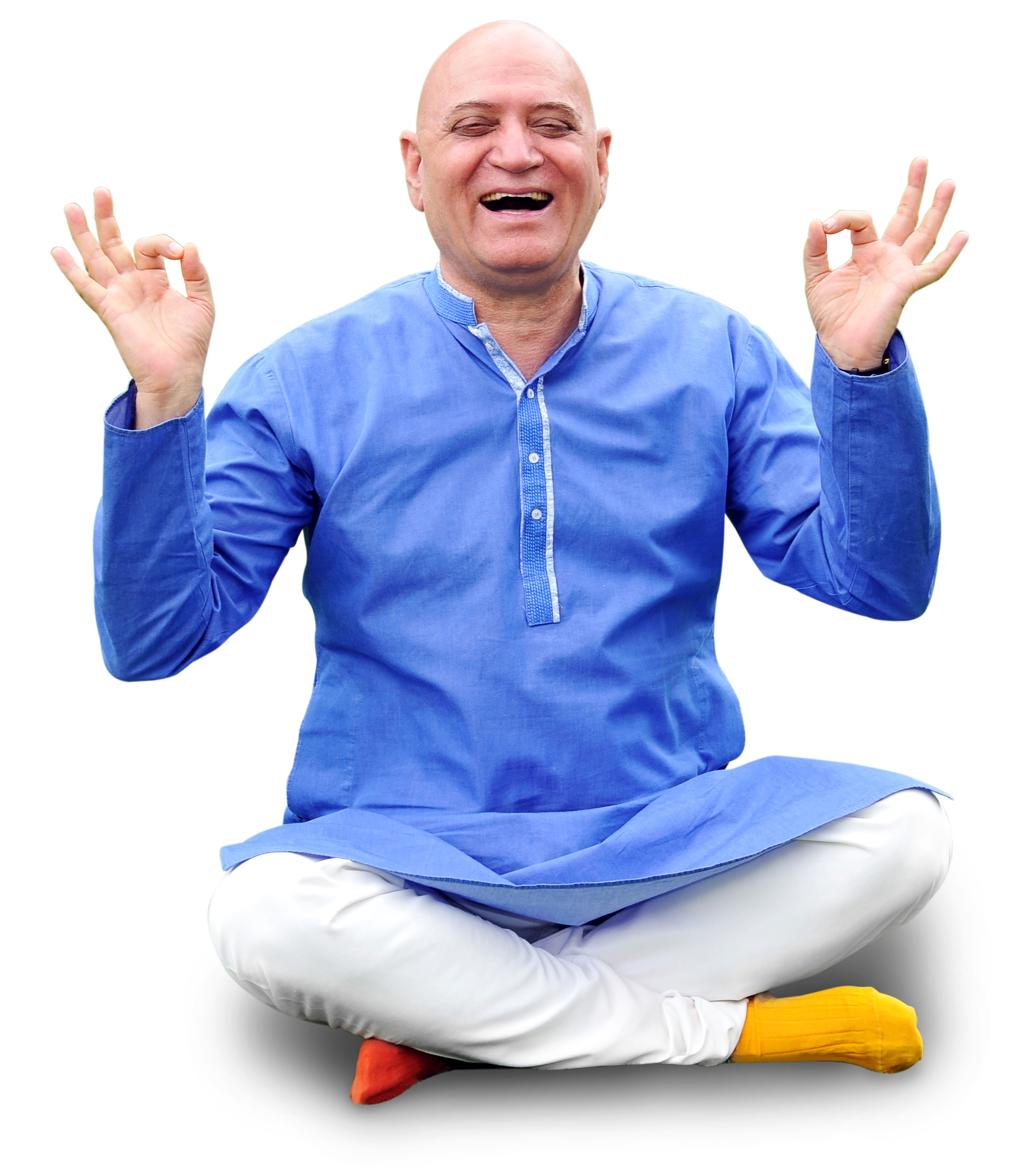Dr. Madan Kataria Feb 06 2025 2334

The word Yoga arises from the Sanskrit root Yuj, which means to integrate and harmonize the body, mind, and spirit.
As the concept of Laughter Yoga evolved, Dr. Kataria found a deep connection between the fundamentals of yoga and what one did in laughter clubs. Initially, he incorporated deep breathing exercises (pranayama) from yoga with laughter exercises, which help increase oxygen levels in the body and brain.
Breath is Life
Breathing is fundamental to life. One can live without food and water for several days but cannot survive if breathing stops for even a few minutes. According to yogic philosophy, we are alive because the cosmic energy from the universe flows into the body through the breath, which is the life energy force, also known as Prana in yoga.
From a medical point of view, the most important component of breath is oxygen. Due to stress and negative mental states, breathing becomes shallow and irregular. We tend to hold our breath whenever the mind is upset. This leads to the accumulation of carbon dioxide in the blood, which triggers anxiety, stress, and emotional reactions.
More Oxygen from Exhalation
The hallmark of yoga breathing is that we should exhale longer than we inhale to get rid of the residual air from the lungs. This increases the amount of fresh air and oxygen intake.
Laughter functions as a breathing exercise that helps us exhale longer and expel stale air from our lungs. In normal breathing, we inhale and exhale only 500 ml of air, while a large amount of residual air remains in our lungs (Residual Volume: 2800 ml). By practicing prolonged laughter, we can forcefully exhale a portion of the residual air (approximately 1500 ml), which contains more carbon dioxide, allowing us to receive more oxygen.
Breathing Capacity and Laughter
The principal organs of respiration are the lungs. Due to a sedentary lifestyle, we do not utilize the full capacity of our lungs. As a result, some lung cells do not participate in oxygen and carbon dioxide exchange. Laughter and deep breathing exercises open up all the lung cells and respiratory passages, increasing breathing capacity, also known as vital capacity.
Diaphragm Activates the Parasympathetic System
It is important to know that the diaphragm is a major muscle of respiration, separating the thoracic and abdominal cavities. Two-thirds of breathing occurs through the movement of the diaphragm, while only one-third is through rib cage expansion. Under stressful situations, most people breathe from the chest and do not use their diaphragm. Both laughter and yogic breathing exercises stimulate diaphragm movement and activate the abdominal muscles.
The diaphragm is connected to a special branch of the autonomic nervous system called the parasympathetic system, responsible for relaxation. Its opposite, the sympathetic system, is responsible for stress arousal. One can turn off the stress arousal system simply by learning to move the diaphragm. In Laughter Yoga, we train the diaphragm and abdominal muscles to stimulate the parasympathetic system.
Change Your Breathing, Change Your Mind
There is a direct relationship between breathing patterns and mental states. When under stress, breathing becomes fast, irregular, and shallow. In contrast, when the mind is at peace, breathing becomes slower, regular, and deep.
Breathing is the only bodily function with a dual character—it occurs automatically under the control of the unconscious mind but can also be consciously regulated. Through the practice of belly laughter and deep abdominal breathing, we can learn to change our breathing pattern from shallow to deep, thereby altering our thoughts. Even if one has disturbing thoughts, the body will not experience a stress response when practicing deep diaphragmatic breathing.
Laughter Yoga Connects People
Unconditional laughter connects people from different cultures and countries, regardless of language. Laughter Yoga fosters strong bonds among those who laugh together, creating family-like connections, enhancing social interactions, and promoting networking—all essential for happiness. The goal of Laughter Yoga is to connect people at a heart level, free from judgment. This is the true essence of yoga.
Laughter Yoga Promotes Spiritual Growth
Laughter Yoga goes beyond just laughing. It not only fosters physical well-being but also enhances the spirit and touches the emotional core. It has the power to transform a selfish state of mind into an altruistic one. People who laugh frequently are more likely to be generous and empathetic than those who do not.
The Scientific Rationale of Yoga and Laughter
For optimal bodily vitality, the food we eat must be properly digested, and our digestive system must be strong. After digestion, nutrients should be absorbed and circulated to all body cells. Finally, for metabolism to convert nutrition into energy, we need oxygen, making a strong respiratory system essential.
According to yoga philosophy, the digestive, circulatory, and respiratory systems must function efficiently to maintain optimum health. Let us examine how Laughter Yoga strengthens these systems.
Toning the Digestive System
All principal digestive organs—the stomach, intestines, liver, and pancreas—are located in the abdominal cavity and supported by strong core muscles. The movement of abdominal muscles and the diaphragm during normal respiration provides a natural massage to these organs.
Laughter Yoga includes various styles of belly laughter that simultaneously exercise the abdominal muscles and diaphragm. Scientists refer to laughter as internal jogging, as it stimulates internal organs. Regular laughter exercises not only strengthen the abdominal muscles and provide an internal massage but also help maintain proper organ placement, ensuring efficient digestion and absorption.
Strengthening the Circulatory System
All body nourishment is absorbed into the blood, processed in the liver, and passed on to the heart, which pumps it throughout the body via blood vessels. Similarly, after delivering nutrients, blood collects metabolic waste and returns it to the heart and lungs for purification.
The heart, the key organ of circulation, benefits significantly from laughter. The fluctuations in intra-thoracic pressure during laughter and breathing aid venous blood return from major veins. A good bout of laughter causes blood vessels to dilate, resulting in a flushed appearance and warmth. Pulse rate and blood pressure temporarily rise before settling below their original levels, toning the circulatory system.
Strengthening the Respiratory System
Once nutrients reach the tissues, oxygen is required for metabolism. Laughter and breathing exercises increase lung capacity and enhance oxygen supply to the body. Through these exercises, Laughter Yoga strengthens the respiratory system, ensuring optimal oxygenation for overall health.


